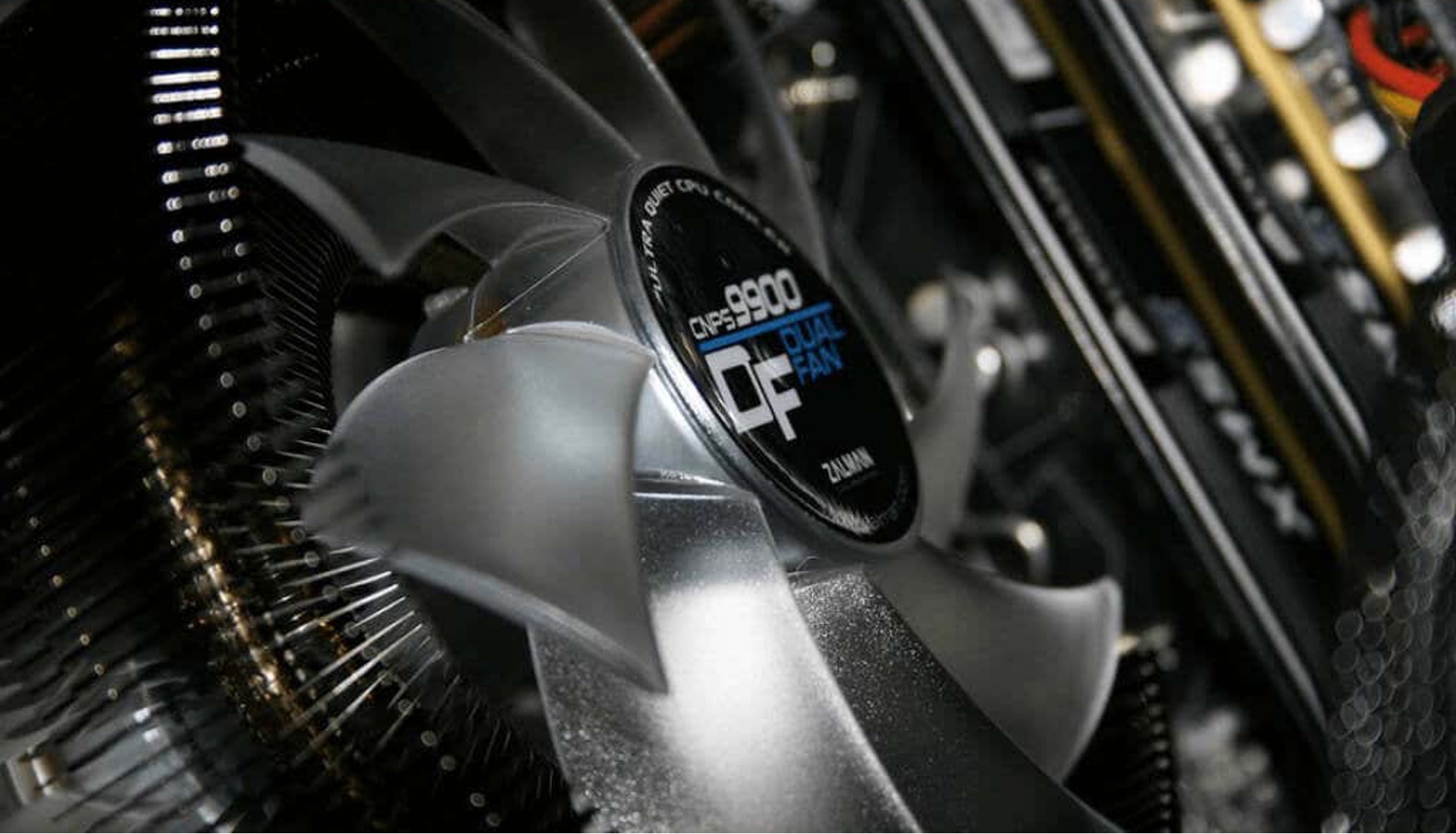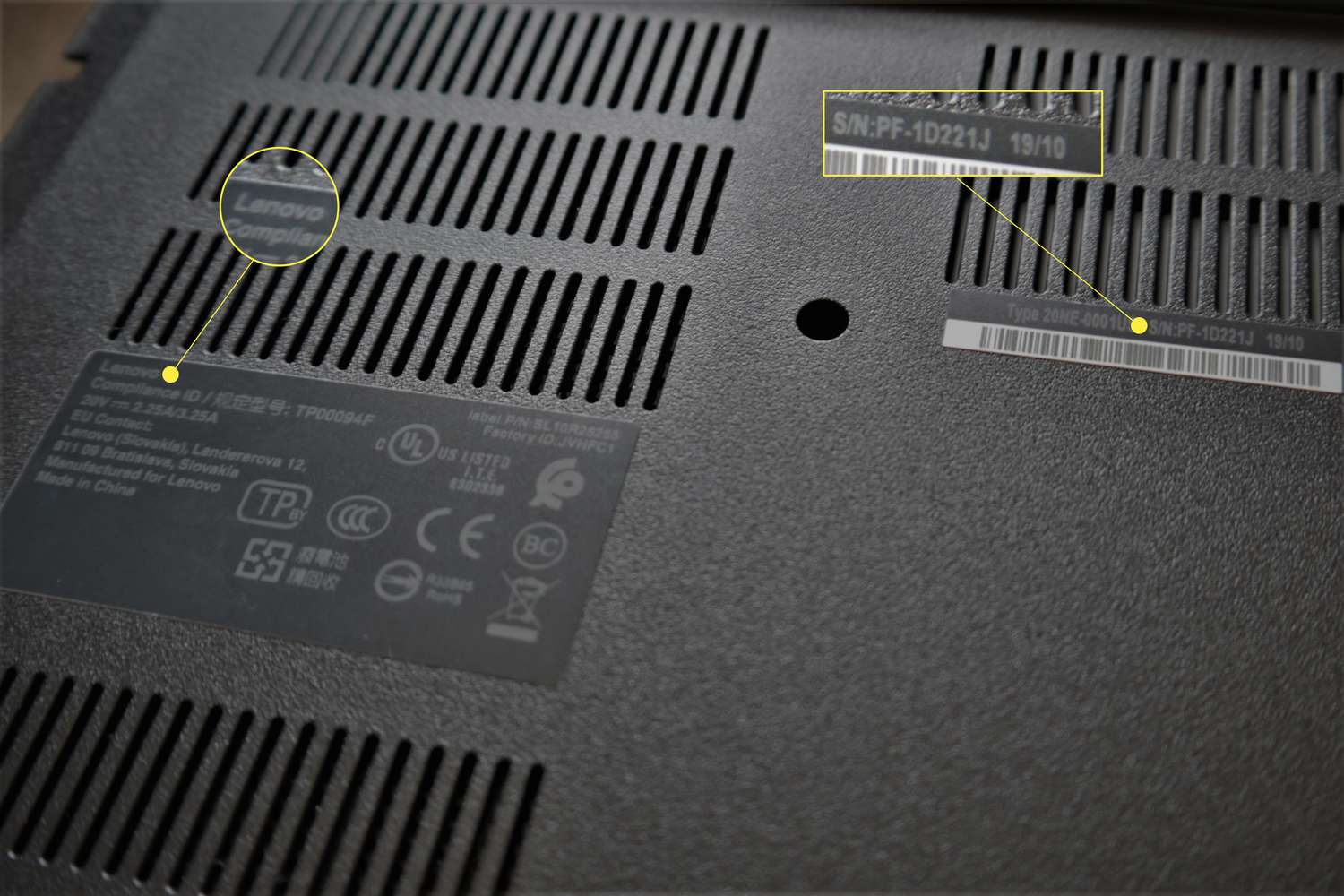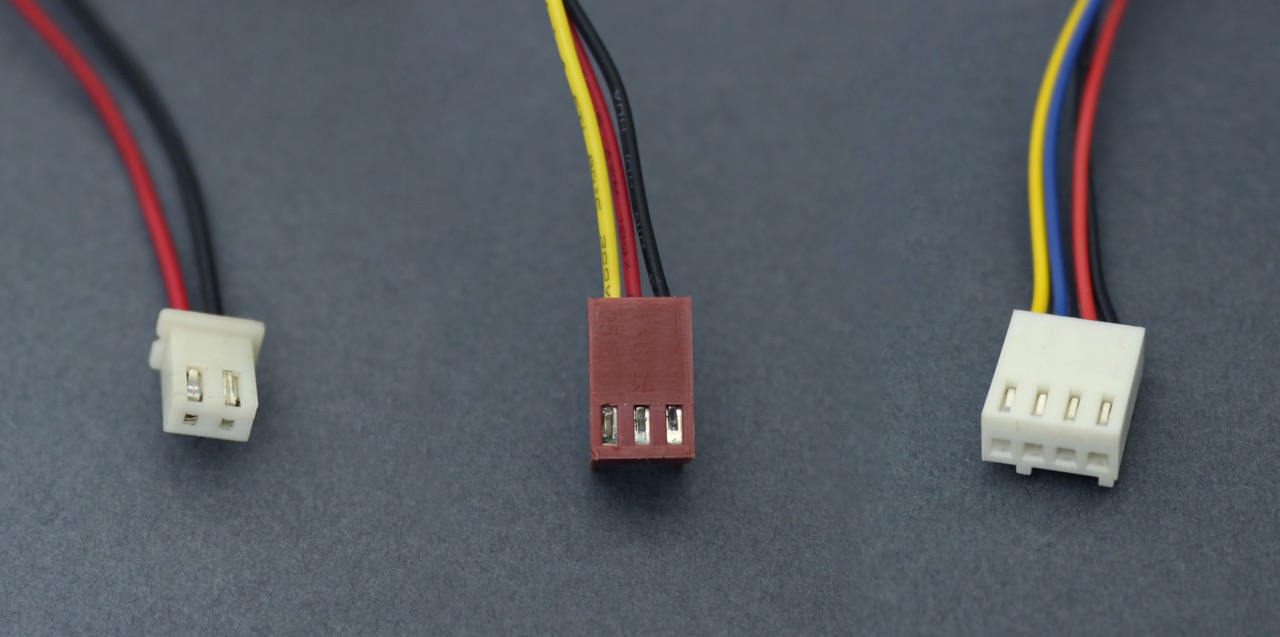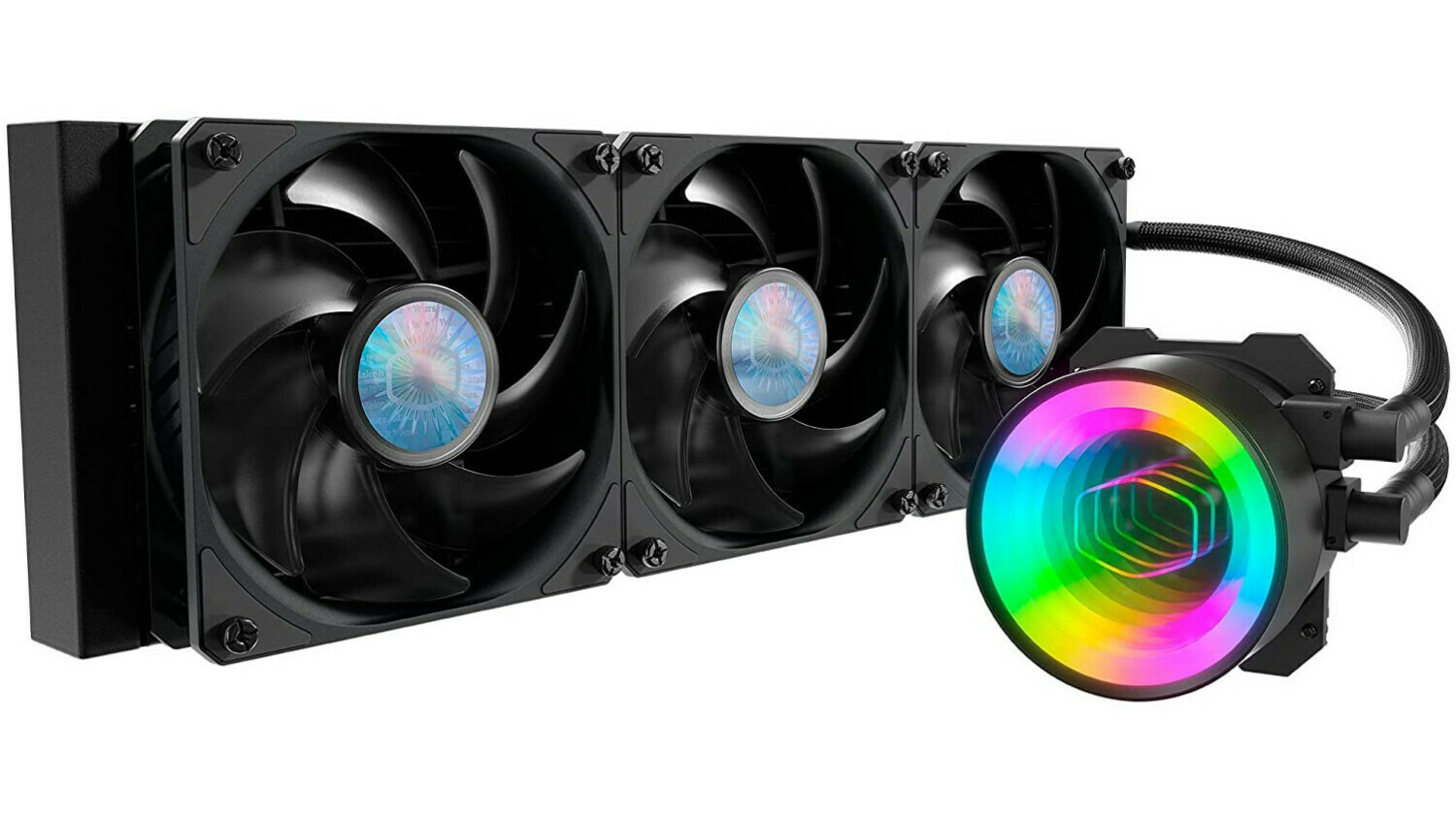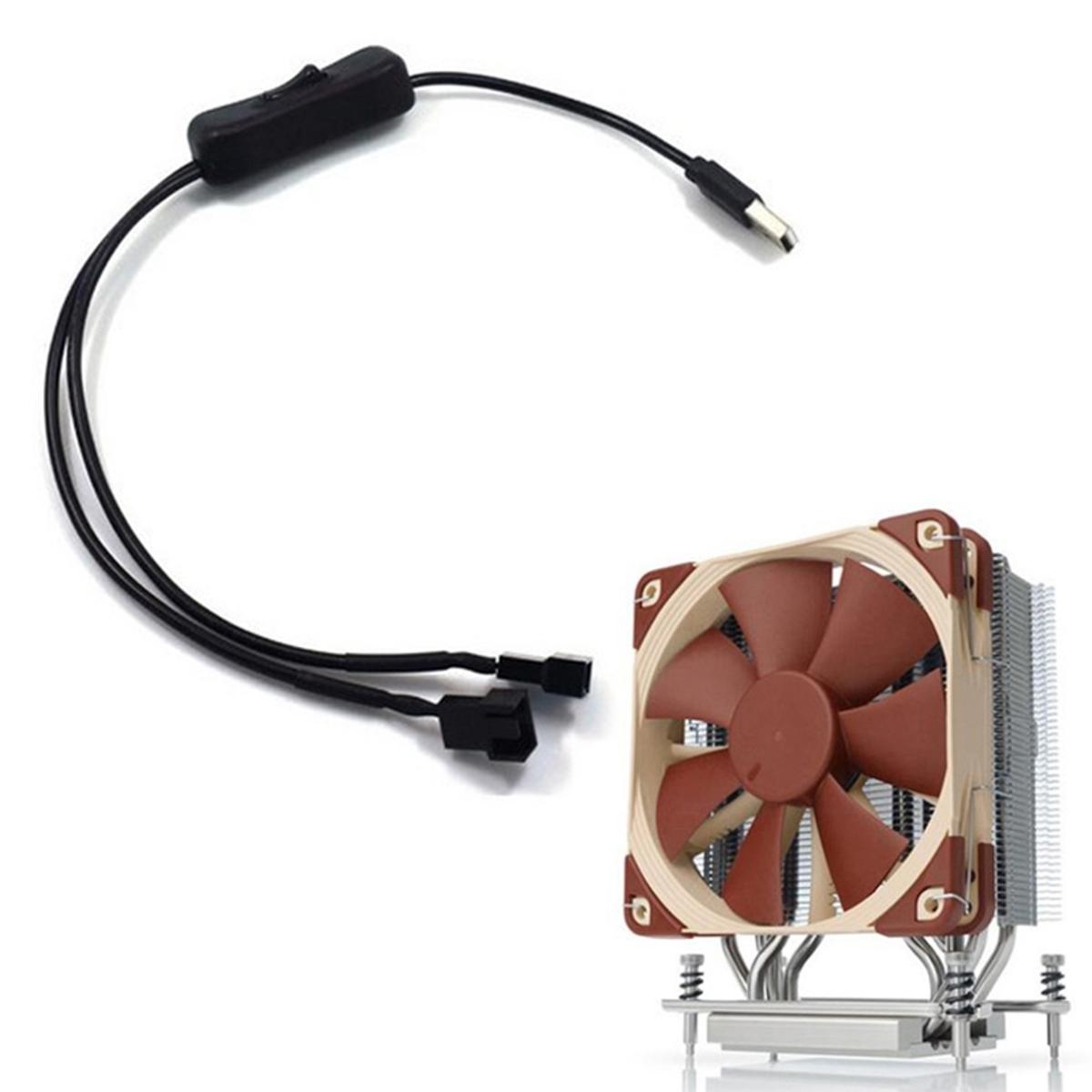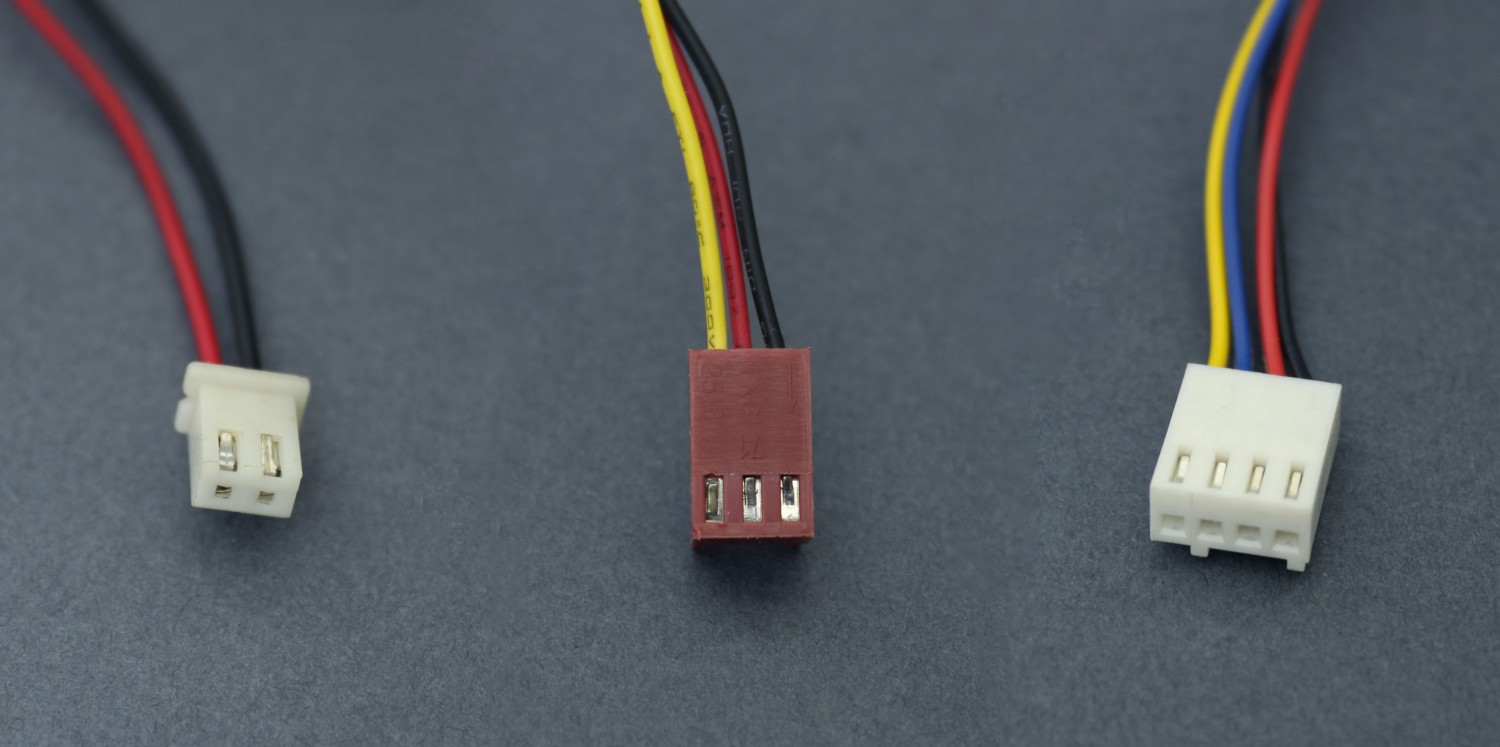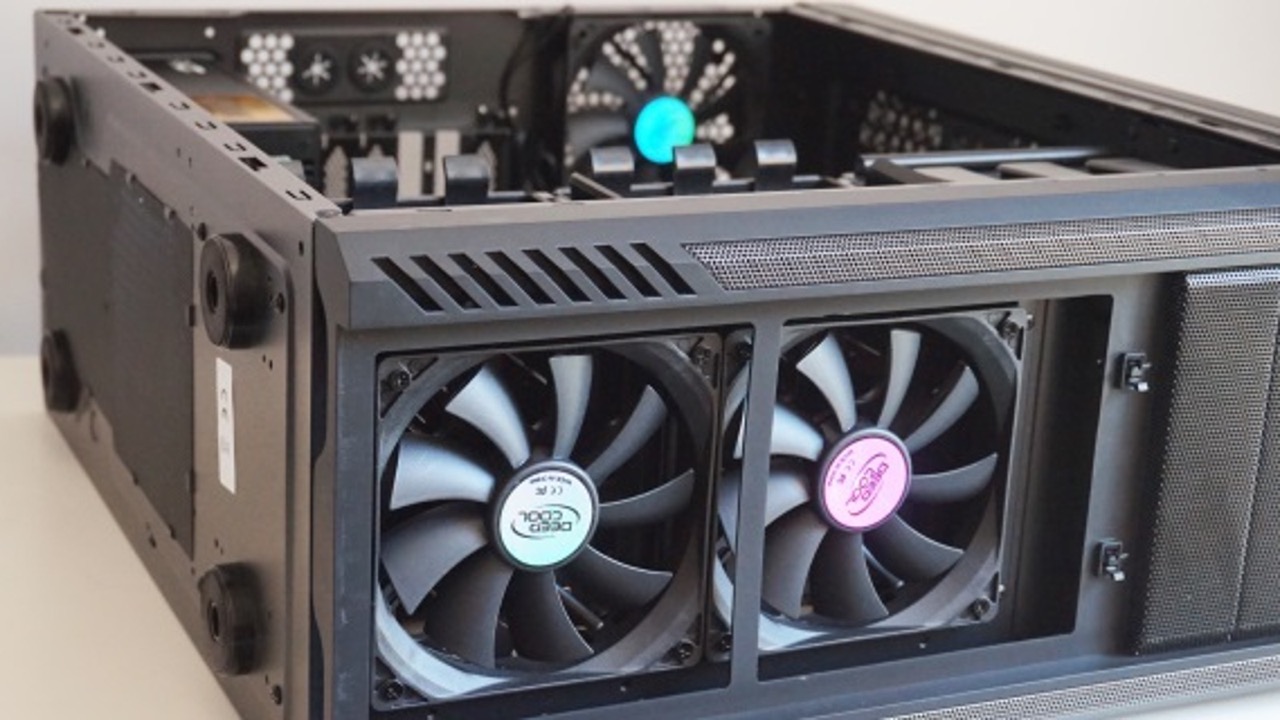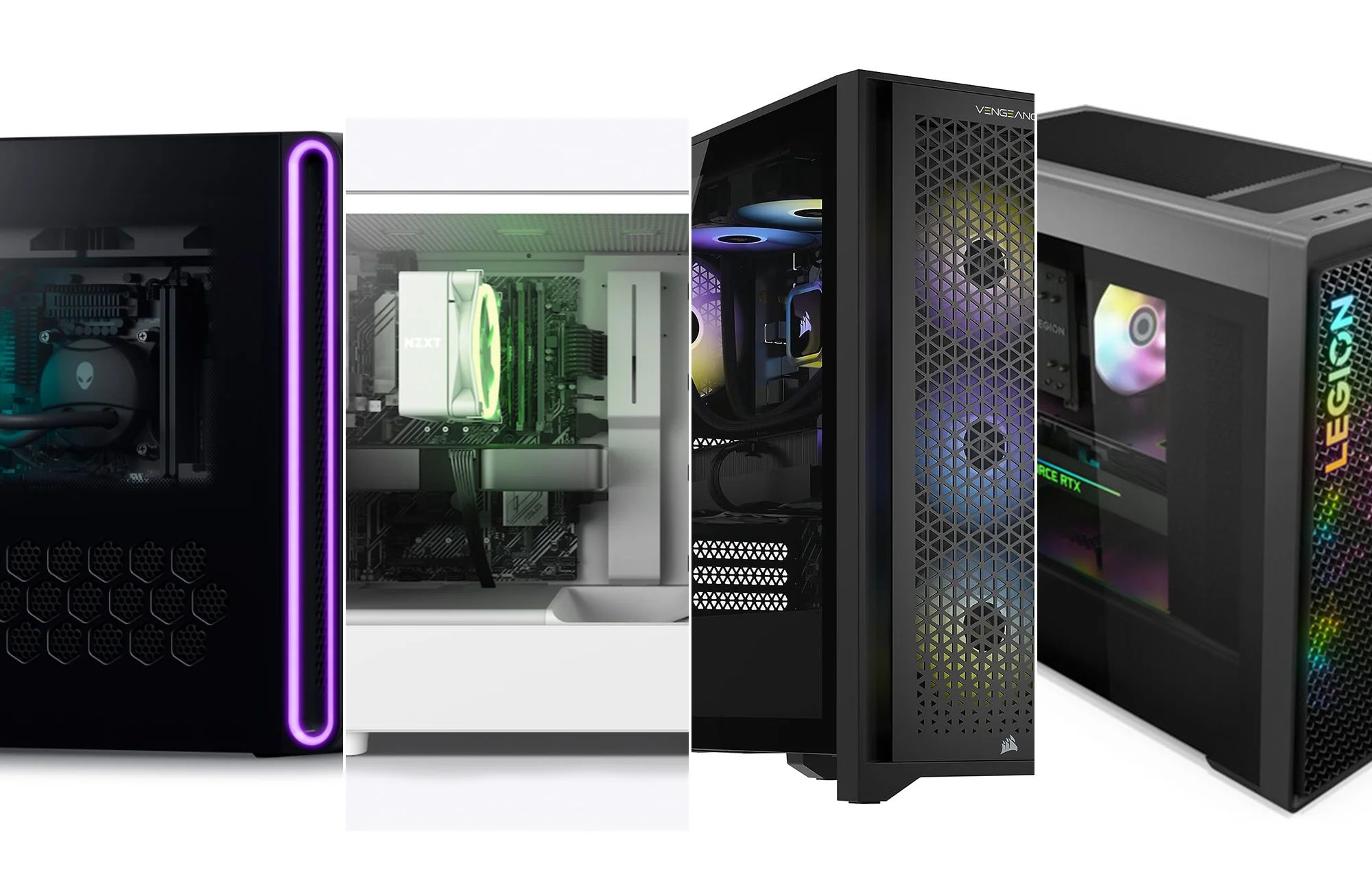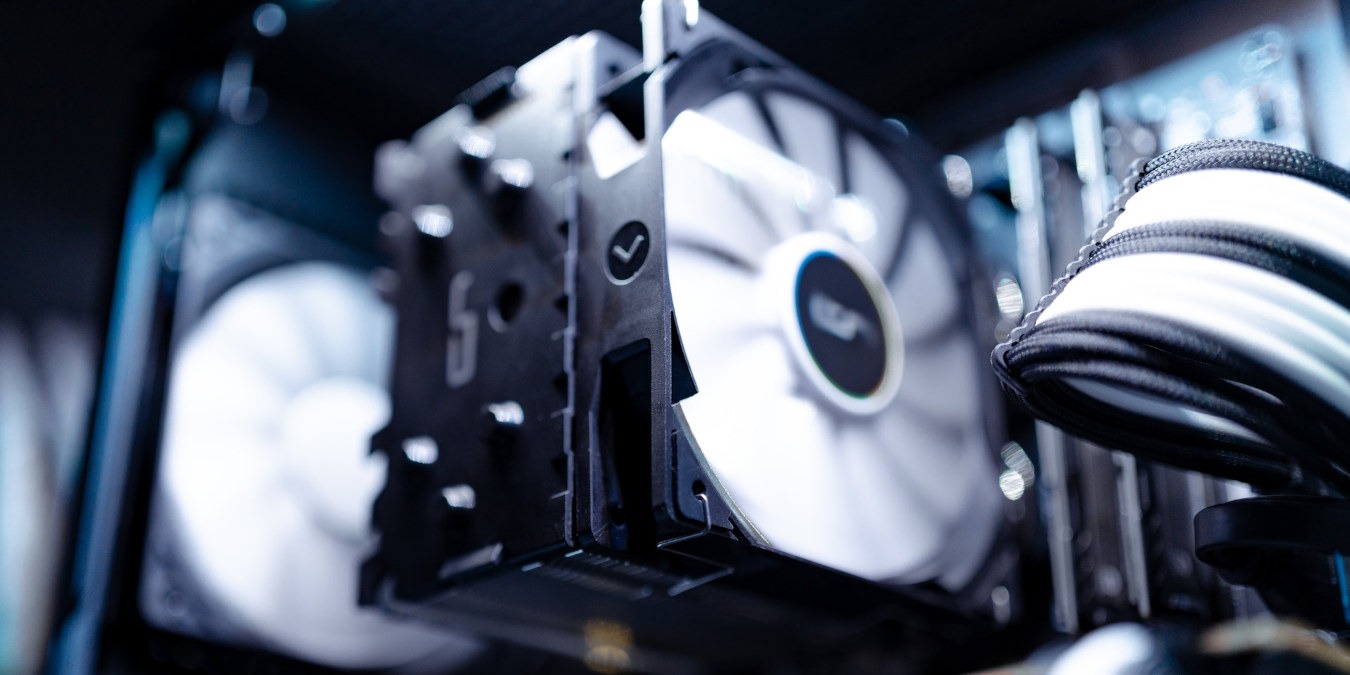Introduction
Properly regulating the speed of case fans is a crucial aspect of maintaining optimal system performance and longevity. The cooling system is an essential component of any computer, as it helps to dissipate heat from the various components, such as the processor and graphics card. If the fans are not running at the appropriate speed, it can lead to overheating, reduced performance, and even system damage.
Case fans are responsible for improving airflow within the computer case, ensuring that the components stay cool during operation. While some cases come with default fan settings, they are not always optimized for individual system needs. Hence, it becomes necessary to regulate the fan speed according to the specific hardware requirements and environmental conditions.
In this article, we will explore why regulating case fan speed is crucial and discuss various methods that can be employed to achieve the desired results. Whether you are an avid gamer, multimedia editor, or simply an enthusiast using a computer for everyday tasks, understanding how to effectively manage your case fan speed can go a long way in enhancing the overall performance and lifespan of your system.
Why is Regulating Case Fan Speed Important?
Regulating the speed of case fans is crucial for several reasons, all of which contribute to the optimal functioning of your computer system. Let’s take a closer look at why it is important to have control over the fan speed:
Temperature Control: Properly regulating case fan speed helps maintain the temperature within the computer case at an optimal level. Heat is a major enemy of electronic components, and if the system gets too hot, it can cause damage to the hardware, resulting in reduced performance and a shortened lifespan.
Noise Reduction: Case fans can generate significant noise, especially when running at high speeds. By regulating the fan speed, you can achieve a balance between performance and noise levels. This is particularly important if you use your computer in a quiet environment or if you find the fan noise distracting during gaming or media playback.
Energy Efficiency: Running case fans at their highest speeds all the time can consume more power than necessary, leading to increased energy bills. By regulating fan speed, you can optimize power usage and reduce energy consumption, making your system more energy-efficient.
Extended Component Lifespan: Excessive heat can significantly reduce the lifespan of computer components, especially the CPU and graphics card. Cooling them effectively by regulating the case fan speed ensures that they operate within safe temperature ranges, prolonging their lifespan and reducing the risk of component failure.
Improved System Performance: Overheating can cause the CPU and other components to throttle their performance to prevent damage. By properly regulating case fan speed, you can ensure that your components stay cool, allowing them to operate at their full potential and deliver optimal performance.
Overall, regulating case fan speed is essential for controlling temperatures, reducing noise, improving energy efficiency, extending the lifespan of components, and enhancing overall system performance. In the next sections, we will explore various ways to achieve this, ranging from manual fan speed adjustment to using third-party software and hardware fan controllers.
Ways to Regulate Case Fan Speed
There are several methods available to effectively regulate the speed of case fans. Let’s explore some of the most common ways to achieve this:
1. Manual Fan Speed Adjustment: One of the simplest ways to regulate case fan speed is through manual adjustment. Most modern computer cases feature fan control knobs or switches that allow you to increase or decrease the fan speed manually. This method provides immediate control and is suitable for users who prefer a hands-on approach.
2. BIOS Fan Control Settings: The BIOS (Basic Input/Output System) of your computer’s motherboard often includes fan control settings. Accessing the BIOS allows you to configure the temperature thresholds at which the fans should operate at different speeds. This method provides more precise control and can be useful for users who want to set specific temperature parameters.
3. Third-Party Fan Control Software: There are various software applications available that enable you to control and regulate fan speed. These applications provide a user-friendly interface where you can adjust fan speeds according to your preferences. Examples of popular software include SpeedFan, Argus Monitor, and CAM. It is important to check compatibility with your motherboard before using third-party software.
4. Hardware Fan Controllers: Hardware fan controllers, often in the form of fan control panels or fan hubs, allow you to control multiple case fans simultaneously. These devices are installed in a drive bay or connected via USB and provide knobs, buttons, or screens where you can adjust fan speeds. Hardware fan controllers offer a convenient and centralized way to regulate case fan speed.
5. PWM (Pulse Width Modulation) Fan Control: PWM fan control is a technology often integrated into modern motherboards. It adjusts the fan speed by varying the duration of power pulses sent to the fan. PWM fans have a 4-pin connector and, when connected to a compatible motherboard header, can be controlled and regulated through software or BIOS settings.
Each of these methods has its advantages and may be more suitable depending on your specific requirements and preferences. It is important to note that not all case fans or motherboards support all methods, so it’s essential to check compatibility before implementation.
With the ability to regulate case fan speed, you can achieve the optimal balance between cooling performance, noise levels, energy efficiency, and component lifespan. Choose the method that best suits your needs and make the necessary adjustments to ensure your computer operates at its best.
Manual Fan Speed Adjustment
One of the simplest ways to regulate case fan speed is through manual adjustment. Many computer cases come with built-in fan control knobs or switches that allow users to increase or decrease the fan speed manually. This method provides immediate control over the fan speed and is suitable for users who prefer a hands-on approach.
To manually adjust the fan speed, locate the fan control mechanism on your computer case. It is usually located on the front or top panel, near the fan mounts. The control mechanism may consist of knobs, switches, or sliders, depending on the design of your case.
Adjusting the fan speed is as simple as turning the knob, flipping the switch, or moving the slider according to your preferences. Clockwise rotation or moving the control mechanism to the maximum position will increase the fan speed, while counterclockwise rotation or moving it to the minimum position will decrease the fan speed.
It is important to note that manual fan speed adjustment provides basic control but may not offer the precision and fine-tuning capabilities of other methods. Additionally, since the adjustment is manual, it requires constant monitoring and adjustment based on changes in the system’s temperature and workload.
If you prefer a more automated and precise control over fan speed, other methods such as BIOS fan control settings, third-party fan control software, or hardware fan controllers may be more suitable. These methods allow for more granular control, temperature-based adjustments, and centralized management of multiple case fans.
However, manual fan speed adjustment can still be a viable option for users who want immediate control over their case fans without relying on software or hardware solutions. It is particularly useful when you need to quickly increase fan speed during intensive gaming or resource-intensive tasks and then decrease it afterwards to reduce noise levels during idle periods.
Remember, each computer case may have a different design and fan control mechanism, so it is important to consult the user manual or manufacturer’s website for specific instructions on how to manually adjust the fan speed for your case. Once adjusted, observe the system’s temperature and performance to ensure that the fan speed is adequate for efficient cooling without unnecessary noise.
In the following sections, we will explore other methods of regulating case fan speed that provide more advanced control and automation options.
BIOS Fan Control Settings
The BIOS (Basic Input/Output System) of your computer’s motherboard often provides fan control settings that allow you to regulate the speed of your case fans. Accessing the BIOS allows you to configure the temperature thresholds at which the fans should operate at different speeds. This method provides more precise control over fan speed and can be particularly useful for users who want to set specific temperature parameters.
To access the BIOS, restart your computer and continuously press the designated key during the boot process. The key to access the BIOS may vary depending on the motherboard manufacturer, but commonly used keys include Del, F2, F10, or Esc. Consult your motherboard’s user manual or manufacturer’s website for the specific key required for your system.
Once in the BIOS, navigate to the hardware or fan control settings section. The exact location and naming may vary depending on the BIOS version and motherboard model. Look for options related to fan control, such as “Fan Configuration,” “Hardware Monitor,” or “PC Health Status.”
Within the fan control settings, you will typically find options to set the fan speed curve or define fan profiles. The fan speed curve allows you to specify different fan speeds based on temperature thresholds. For example, you can set the fans to run at a low speed when the CPU temperature is below a certain threshold and increase the speed gradually as the temperature rises.
Some BIOS settings also allow you to define specific fan profiles, such as “Silent,” “Standard,” or “Performance.” Each profile corresponds to a predefined fan speed curve optimized for different scenarios. Selecting a profile will automatically adjust the fan speeds accordingly.
It is important to note that not all motherboards have advanced fan control settings in the BIOS. Older or budget motherboards may have limited options or even lack fan control settings altogether. Consulting the motherboard manual or checking the manufacturer’s website will provide more information on the available options for your specific motherboard.
After configuring the fan control settings in the BIOS, save the changes and exit. The fans will now operate according to the specified temperature thresholds or selected fan profiles. Monitor the system’s temperature and performance to ensure that the fan speeds are appropriate for efficient cooling without excessive noise.
BIOS fan control settings offer a reliable and hardware-based method of regulating case fan speed. They provide more precise control and can be beneficial for users who want to set specific temperature thresholds or customize fan profiles according to their needs. However, for users looking for more advanced automation and control options, third-party fan control software or hardware fan controllers may be more suitable, which we will explore in the following sections.
Third-Party Fan Control Software
If you’re looking for more advanced control and automation options for regulating case fan speed, third-party fan control software is an excellent solution. These software applications provide user-friendly interfaces that allow you to adjust and regulate fan speeds according to your preferences. They often offer more granular control over fan speed, temperature-based adjustments, and additional features for monitoring system performance.
There are several popular third-party fan control software programs available, each with its unique features and compatibility with different hardware. Let’s explore a few of the commonly used options:
1. SpeedFan: SpeedFan is a widely-used fan control software that supports a wide range of sensors and hardware configurations. It allows you to monitor fan speeds, temperatures, and voltages while providing the ability to adjust fan speeds based on customizable temperature thresholds. SpeedFan also offers automatic fan control based on specific fan profiles.
2. Argus Monitor: Argus Monitor is another powerful fan control software that provides comprehensive monitoring and fan control capabilities. It supports various hardware sensors and offers customizable fan speed curves based on temperature thresholds. Argus Monitor also includes features such as fan health monitoring, smart fan control, and real-time data logging.
3. CAM: CAM is a feature-rich software provided by NZXT that enables control over fan speed, temperature monitoring, and system performance optimization. It offers an intuitive interface, customizable fan profiles, and the ability to sync fan speeds with other NZXT RGB components. CAM also provides real-time hardware monitoring, system diagnostics, and overclocking utilities.
When using third-party fan control software, it is essential to ensure compatibility with your motherboard and other hardware components. Some software programs may have limitations or may not work optimally with certain hardware configurations. It is recommended to check the software’s official website or community forums for compatibility information and support.
Once you have installed the software, you can easily adjust and regulate fan speeds within the program’s interface. Depending on the software, you may have the option to set custom fan speed curves, define fan profiles, or use automatic fan control based on temperature sensors.
Using third-party fan control software provides a more advanced and flexible approach to regulating case fan speed. It allows for precise control, temperature-based adjustments, and additional monitoring features to optimize your system’s cooling performance. However, keep in mind that relying on software for fan control may require the software to be running in the background for continuous monitoring and adjustments.
In the next section, we will explore another method of regulating case fan speed: utilizing hardware fan controllers.
Hardware Fan Controllers
If you’re looking for a centralized and hardware-based solution for regulating case fan speed, hardware fan controllers are an excellent option. These devices provide convenient control over multiple case fans simultaneously, allowing for easy adjustment of fan speeds and monitoring of system temperatures. Hardware fan controllers offer a more hands-on approach to fan control and can be particularly useful for users who prefer physical knobs or buttons for adjustments.
Hardware fan controllers come in various forms, including fan control panels and fan hubs. They are typically installed in a drive bay or connected via USB, providing an intuitive interface for controlling fan speeds. Most hardware fan controllers feature knobs or buttons that allow you to adjust fan speeds easily.
By using a hardware fan controller, you can set different fan speeds for various scenarios or preferences. For example, you may want to increase fan speeds during intense gaming sessions to ensure optimal cooling performance, and then decrease the speeds during idle periods to minimize noise levels. With hardware fan controllers, you have the flexibility to make these adjustments quickly and conveniently.
Additionally, some hardware fan controllers offer additional features such as temperature monitoring, fan health indicators, and even fan speed presets. These advanced functionalities can provide valuable information and further customization options to enhance your system’s cooling efficiency.
When selecting a hardware fan controller, it is important to ensure compatibility with your computer case and the number of fans you intend to control. Consider factors such as the number of fan headers supported, the maximum wattage per channel, and the overall design that suits your needs.
Installation of hardware fan controllers is typically straightforward. It involves connecting the controller to the power supply and the fans using the provided cables. The specific installation steps may vary depending on the model and manufacturer, so referring to the user manual is recommended.
Hardware fan controllers offer a reliable and straightforward solution for regulating case fan speed. They provide centralized control over multiple fans, allowing for quick adjustment of speeds and easy monitoring of system temperatures. Whether you prefer physical control or want a dedicated device for fan management, hardware fan controllers are an excellent choice.
Next, we will conclude the article by summarizing the importance of regulating case fan speed and providing a final perspective on the various methods discussed.
Conclusion
Properly regulating the speed of case fans is crucial for maintaining optimal system performance, temperature control, and component longevity. By effectively managing the fan speed, you can ensure efficient cooling, reduced noise levels, improved energy efficiency, and extended component lifespan.
In this article, we explored various methods to regulate case fan speed. Manual fan speed adjustment allows for immediate control but requires constant monitoring. BIOS fan control settings offer more precise control and temperature-based adjustments, while third-party fan control software provides advanced automation and customization options. Hardware fan controllers provide centralized control over multiple fans and offer a more hands-on approach to fan management.
It is important to choose the method that best suits your needs, considering factors such as your preference for control, level of automation, and compatibility with your hardware. Additionally, paying attention to system temperatures and performance is essential to ensure the fan speed is adequate for efficient cooling without excessive noise.
Whether you are a gaming enthusiast, content creator, or everyday computer user, understanding how to regulate case fan speed is vital to maximize your system’s potential and ensure its longevity. By maintaining optimal temperatures and minimizing noise levels, you can create a more comfortable and reliable computing experience.
Take the time to explore the various methods discussed in this article and experiment with different settings to find the optimal fan speed configuration for your system. By doing so, you can enjoy improved cooling performance, reduced noise levels, and prolonged component lifespan.
Remember, proper case fan speed regulation is just one aspect of overall system maintenance. Regularly cleaning your computer’s internals, ensuring proper airflow through cable management, and monitoring hardware temperatures are additional practices that can contribute to the optimal functioning of your system.
With a well-regulated cooling system, your computer will operate at its best, allowing you to fully enjoy your computing experience without worries about overheating or performance issues.







